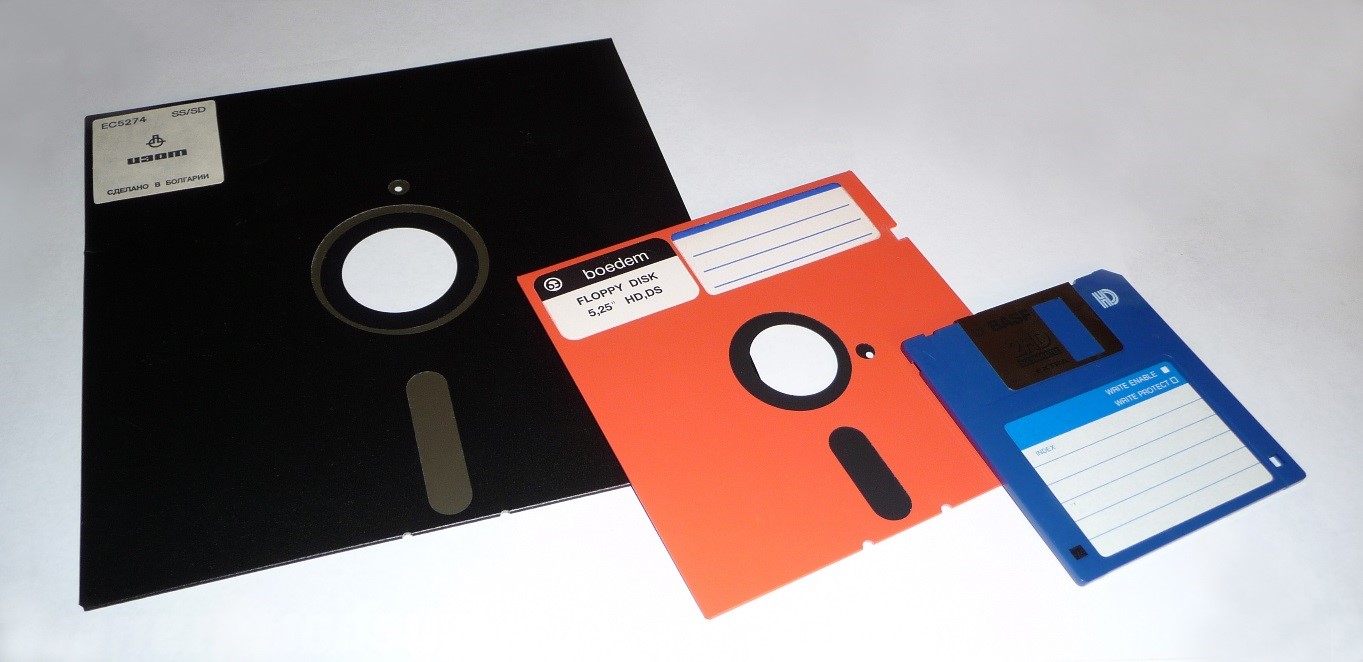Blog
Unless otherwise stated, content is shared under CC-BY-NC Licence
Stewardship with a network logic
Brian Lavoie is Research Scientist for OCLC in the USA
An important class of at-risk digital materials is the myriad forms of output generated over the research lifecycle – think of data sets, computer code, online discussions, e-lab notebooks, and so on. Growing recognition of the value of these materials to the scholarly record has led to many efforts to collect and preserve them over the long term. But mitigating risks associated with preserving digital research outputs means setting up stewardship arrangements that are well-adapted to the evolving nature of today’s scholarly record. For that, we need stewardship with a network logic, or conscious coordination.
What if online services had a time dimension?
Euan Cochrane is Digital Preservation Manager at Yale University Library
Online web services are used by billions of people every day. They impact our lives and society in a myriad of ways. The way they present data to us and the ways they manipulate and transform the data we store in them have the potential to change behaviour and our understanding of the world. And this is all being done at a scale unimaginable in previous history. These services have changed greatly over time. Many of those changes are not publicly documented or even known to the general public. I’ve outlined a few of those we do know of below:
Preserving and Integrating Community Knowledge of Computing Systems
Ethan Gates is Software Preservation Analyst, Digital Preservation Services at Yale University Library in the USA
The efforts of the EaaSI (Emulation-as-a-Service Infrastructure) project and the Software Preservation Network to preserve the software and computing environments around digital objects have revealed that a parallel effort needs to be made to preserve the expertise and knowledge necessary to use and interact with such environments. Scanning software manuals and printed guidebooks, photographing boxes and physical media, archiving the web sites of developers, enthusiasts and community forums - all of these are necessary activities, largely happening on an ad hoc basis in the digital preservation community if at all. Dedicated, collaborative initiatives on this front are essential to make sure future users are able to interact with authentic digital objects in context.
One of the student workers we employ in the EaaSI program once came to me with a troubleshooting problem. This is not unusual - our diligent student team is tasked with cataloging and attempting to install a vast range of legacy software applications, and between quirks in the applications, quirks in the necessary operating systems, quirks in the emulators running them and quirks in Yale’s beta installation of the EaaSI platform, any number of questions can come up. The student was having trouble with an application running in MacOS 7.5: the menu bar at the top of the screen seemed to be glitching, constantly closing before they could access the settings and preference menus that are often our best source of information about a given piece of software (language configuration, file format capabilities, etc.)
Inspiring Confidence: Securing ARCW Security
Sally McInnes is Chair of the ARCW Digital Preservation Group and Head of Unique Collections and Collections Care at the National Library of Wales
It has been two years since the Archives and Records Council launched its National Digital Preservation Policy on International Digital Preservation Day, 2017. Since then, ARCW has made considerable progress in supporting the policy, the aims of which are to:
- To ensure digital resources of enduring value are selected for preservation and remain authentic and accessible in the future.
- To provide a framework for the development of digital preservation strategies that can be adapted for use by organisations throughout Wales, irrespective of their size and capacity.
- To raise awareness of the importance of effective Digital Preservation among archive institutions and practitioners, managers, information technology staff and stakeholders / decision makers.
Email at Risk: Challenges and Opportunities in Preserving Email
Sally DeBauche is Digital Archivist at Stanford University Libraries in the USA
Email offers singular insight into and evidence of a person or organization’s self-expression, as well as records of collaboration, professional, social, and familial networks, and all manner of transactions. Email is an essential component of the archival record -- the modern equivalent of the type or hand-written correspondence of past centuries. However, email is also a complex format that poses many technical challenges to archivists working to preserve and provide access to it. In their 2018 report, the Task Force on Technical Approaches for Email Archives described email as, “…not one thing, but a complicated interaction of technical subsystems for composition, transport, viewing, and storage.”
Compounding this complexity, email is not a constant or consistent format. As email technology has evolved and email clients have fallen in and out of use, archivists working with historical email collections will encounter a wide variety of email file types. Thus, the most essential tasks of capturing, processing, preserving, and providing access to email pose a host of technical obstacles for cultural heritage institutions.
Exploring 3D File Formats on the Sustainability of Digital Formats
Kate Murray is Digital Projects Coordinator, Leader of Sustainability of Digital Formats and FADGI Audiovisual Working Group at the Library of Congress in the USA
3D content, both digitized and born-digital, continues to be an area of focus across the Library of Congress. Last year on the #WDPD blog, we focused on a recap of the Born to Be 3D: Digital Stewardship of Intrinsic 3D Data (#B2B3D) small group forum to discuss stewardship of born digital 3D data. This year on the Sustainability of Digital Formats website, we’re diving a bit more in depth to explore file formats for 3D for scanning, printing and modeling.
Digital Preservation and Games
Nance McGovern is Director of Digital Preservation at MIT Libraries, Massachusetts Institute of Technology (MIT) in the USA
This year for World Digital Preservation Day I decided to focus on the place of games in digital preservation. The digital preservation community benefits from having digital preservation games to help build understanding and awareness about good practice for digital preservation games also represent an example of complex digital content that may need to be preferred. I have been lightly monitoring a class on game design this semester as a way to continue thinking about games in the various ways digital preservation intersects with them.
Taming the Pre-Ingest Processing Monster
Sheila Morrissey is Senior Researcher at Portico, based in New York
We hear again and again that, first, one of the biggest threats to ensuring long-term access to our digital heritage is the cost of preservation, and, second, that one of the critical cost drivers is the set of activities associated with selection, acquisition, and other pre-ingest processing (such as quality assurance of acquired artifacts).
As the amount of content in preservation archives grows at geometric rates, and as the artifacts in ever-increasing input streams continues to evolve, sometimes unpredictably, into varying new complex forms, how do we scale what might be called “pre-ingest” activities without scaling up our costs at the same rate?
Charting the Landscape: A digital content review for effective long-term preservation planning
Daniele Balduzzi is IT Officer/Archivist and Shiri Alon is Archivist at World Bank Group Archives
A year ago, our colleagues Jeanne Kramer-Smyth and April Miller published a post about the people and process investments required for the Archives of the World Bank Group (WBG) to fully handle both analog and born-digital records. In this post we will discuss how we are defining the digital landscape of the WBG in order to shape and refine our long-term digital preservation strategy.
Planning for long-term preservation of digital content is a challenging task, often resulting in more unanswered questions than definitive decisions. It’s a complex effort, but also an iterative process with a staggered implementation: setting a course for a distant future in a dynamic present requires a solid sturdy boat, a clear map to refer to, and the agility to navigate in uncharted waters.
The Pre-Digital Preservation Black Hole
Eng Sengsavang is Reference Archivist for United Nations Educational, Scientific and Cultural Organization (UNESCO) in Paris, France

Credit: George Chernilevsky: https://commons.wikimedia.org/wiki/File:Floppy_disk_2009_G1.jpg#/media/File:Floppy_disk_2009_G1.jpg
My experience of technology is inevitably historical: as a child of the 80s, an adolescent of the 90s, and an adult into the 2000s, I experienced first-hand the paradigm shift from analogue to digital technologies, alongside the continual accrual of different eras of technology co-existing simultaneously. Of course, not only mine, but every person’s experience of technology is necessarily historical: throughout our lives, we experience on a deeply personal and at the same time macro level the mutations of technologies that seem to gather speed over time, new technologies continually appearing and old ones disappearing or threatening to disappear, and being replaced or persisting in ways both predictable and unexpected.






















































































































































